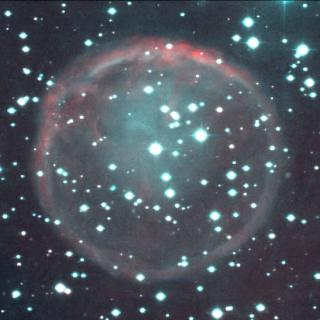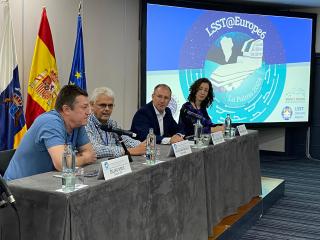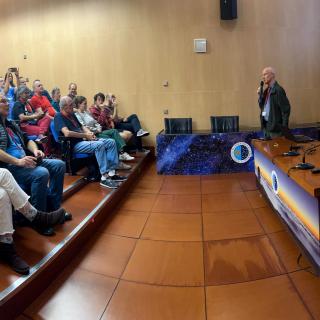On Thursday, October 9th, at the “H10 Taburiente Playa” Hotel, at the Cancajos(La Palma), a conference about gamma-ray astronomy, titled “Groundbased-Gamma Ray Astronomy on La Palma and some new projects for Cosmic Ray Physics at other places,” will take place, as a result of the official opening of the MAGIC telescope. The opening act for this telescope, which coincides with the opening of the MERCATOR telescope, will take place on the next day, October 10th and is being organized by those responsible for the international consortium that manages MAGIC and the Catholic University at Leuven (Belgium), owner of the MERCATOR telescope, in collaboration with the Instituto de Astrofísica de Canarias (IAC).
Among other topics, the results obtained with the HEGRA experiment, functional at the Observatorio del Roque de los Muchachos until the end of 2002, will be presented. Manel Martínez, of the Instituto de Física de Altas Energías (IFAE) in Barcelona, and co-spokesman of the MAGIC telescope, will talk about this telescope’s near future. Rafael Rebolo, of the IAC, will give a presentation about optical Astronomy in the Canary Islands,
MAGIC: high-energy science
MAGIC (acronym for Major Atmospheric Gamma Imaging Cherenkov), with a “giant” collector 17 m in diameter, has been designed for the detection of high-energy cosmic rays. This telescope is the result of the collaboration of several universities and research institutes worldwide, with a strong Spanish presence. The main detector has been built by the IFAE, which works collaboratively with the Universidad Complutense de Madrid (UCM) and the Universidad Autónoma de Barcelona (UAB).
MAGIC is a Cherenkov telescope, the largest in the world in gamma-ray detection. This kind of very high energy radiation cannot be detected directly from Earth because it is absorbed by the Earth’s atmosphere. In this process, a cascade of light-emitting particles in the blue UV range is generated in a very short period of time. This glow is known as “Cherenkov radiation,” which is the radiation that MAGIC will be detecting.
This telescope will allow for the exploration of a range of energies unreachable up to now. For this reason, it has technical improvements with respect to the previous generation of Cherenkov telescopes: more accuracy, greater efficiency, and easy handling due to its light structure. Some of the scientific projects that will be completed are related to Gamma Ray Bursts (GRBs) , active galactic nuclei, and dark matter; the latter associated with the Supersymmertric theory in Particle Physics.


